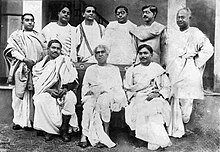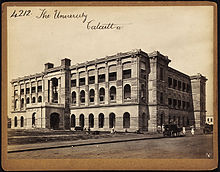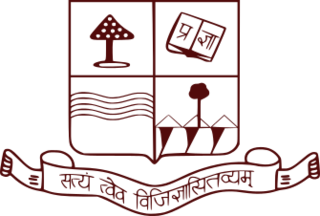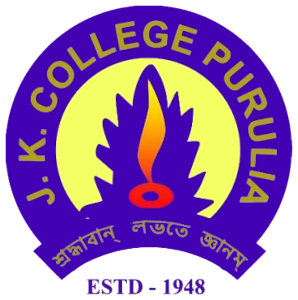
The history of the University of Calcutta began in 1857; it is the oldest of the modern universities in India. [1]

The history of the University of Calcutta began in 1857; it is the oldest of the modern universities in India. [1]
The University of Calcutta was founded in 1857. Dr. Fredrick John, the education secretary to the then British Government in India, first tendered a proposal to the British Government in London for the establishment of a university in Calcutta, along the lines of London University, but at that time the plan failed to obtain the necessary approval. However, a proposal to establish two universities, one in Calcutta and the other in Bombay was later accepted in 1854 and the necessary authority was given through Wood's despatch. The Calcutta University Act came into force on 24 January 1857 and a 41-member Senate was formed as the policy making body of the university. When the university was first established it had a catchment area covering the area from Lahore to Rangoon (now in Myanmar)—the largest of any Indian university. [1]
On 30 January 1858, the Syndicate of the Calcutta University started functioning. [2] The first meeting of the Senate was held in the Council room of the Calcutta Medical College. A temporary office of the university was started in a few rented rooms in Camac Street. For several years afterwards the meetings of the Senate and Syndicate were held in a room of the Writers' building. 244 candidates appeared for the first Entrance Examination of the university, held in March 1861 in the Town Hall of Calcutta.


The first Chancellor and Vice-Chancellor of the Calcutta University were Governor General Lord Canning and Chief Justice of the Supreme Court, Sir William Colvile, respectively. [3] In 1858, Joddu Nath Bose and Bankim Chandra Chatterjee became the first graduates of the university. [2]
From 1860 to 1890, Government Science College, Jabalpur, the first science college of India, was affiliated to the University of Calcutta.
In 1862, a decision was taken by the Senate to construct for the university a building of its own. Accordingly, the historical Senate Hall was constructed at a cost of Rs. 2,52,221/- and inaugurated on 12 March 1873 by holding the convocation of the university.
The university library was also started soon after.
In 1914, the University College of Science or Rajabazar Science College was established. A centralized Post-Graduate system of teaching and research was started in 1917. The Asutoish building was opened in 1926. The Asutosh Museum of Indian Art started in 1937.
in 1937 when Dr. Syamaprasad Mookerjee was the Vice-Chancellor, he requested Rabindranath Tagore to compose a song to be adopted as the university song of the University of Calcutta. Tagore composed two songs instead of one. Later the second song, Subho Karmapathe Dharo Nirvayo Gaan was chosen to be the university song.
The Institute of Nuclear Physics, the first of its kind in Asia, was founded under the leadership of Meghnad Saha in 1945.
In the year 2001 the University of Calcutta was awarded with the 'Five Star' status in the first cycle of the University's accreditation by the National Assessment and Accreditation Council (NAAC). In 2009 and 2017, the National Assessment and Accreditation Council (NAAC) awarded its highest grade of 'A' to the University of Calcutta in 2nd & 3rd cycle of the University's accreditation.
In 2019, the university's central library and 40 departmental libraries were opened to the general public. [4]

The first seal was adopted when the university was founded on 24 January 1857, when India was under company rule. [5]
The second seal of the university was adopted after the formation of the British Raj. It features within it a coat of arms, with a lion and the St Edward's Crown at the crest, symbolizing the formation of the British Raj when India was brought under direct rule by the British Crown. It features a lion and unicorn as supporters, and the motto Dieu et mon droit at the bottom. [5]
The third seal was used for a brief period of time in 1930. It features three elephants carrying a book. [5]
The fourth, fifth, and sixth seals are very similar, and they all feature lotuses. [5]
The seventh seal is currently used today. [5]

The University of Calcutta is a highest public research university located in Kolkata, West Bengal, India. It has 151 affiliated undergraduate colleges and 16 institutes in Kolkata and nearby areas. It was established on 24 January 1857 and is the first multidisciplinary and Western-style institution in Asia. Today, the university's jurisdiction is limited to a few districts of West Bengal, but at the time of establishment it had a catchment area, ranging from Lahore to Myanmar. Within India, it is recognized as a "Five-Star University" and accredited an "A" grade by the National Assessment and Accreditation Council (NAAC). The University of Calcutta was awarded the status of "Centre with Potential for Excellence in Particular Area" and "University with potential for excellence" by the University Grants Commission (UGC).

The University of Madras is a public state university in Chennai, Tamil Nadu, India. Established in 1857, it is one of the oldest and among the most prestigious universities in India, incorporated by an act of the Legislative Council of India under the British government.

The University of Mysore is a public state university in Mysore, Karnataka, India. The university was founded during the reign of Krishnaraja Wadiyar IV, the Maharaja of Mysore. The university is recognised by the University Grants Commission for offering higher studies degree courses on-campus as well as online. It was inaugurated on 27 July 1916. Its first chancellor was the Maharaja of Mysore; the first Vice-Chancellor was H. V. Nanjundaiah. The university became the first outside of British administration in India, the sixth in India as a whole, and the first in Karnataka. It is a state university of the affiliating type, and became autonomous on 3 March 1956, when it gained recognition from the University Grants Commission.

The University of Allahabad is a collegiate central university located in Allahbad, Uttar Pradesh, India. It was established on 23 September 1887 by an act of Parliament and is recognised as an Institute of National Importance (INI). It is one of the oldest modern universities in India. Its origins lie in the Muir Central College, named after Lt. Governor of North-Western Provinces Sir William Muir in 1876, who suggested the idea of a Central University at Allahabad, which later evolved to the present university. it was known as the "Oxford of the East". Its Central University status was re-established through the University of Allahabad Act 2005 by the Parliament of India.

Patna University is a public state university in Patna, Bihar, India. It was established on 1 October 1917 during the British Raj. It is the first university in Bihar and the seventh oldest university in the Indian subcontinent in the modern era. It offers different undergraduate and postgraduate degree level courses.

The Bengal Renaissance, also known as the Bengali Renaissance, was a cultural, social, intellectual, and artistic movement that took place in the Bengal region of the British Raj, from the late 18th century to the early 20th century. Historians have traced the beginnings of the movement to the victory of the British East India Company at the 1757 Battle of Plassey, as well as the works of reformer Raja Rammohan Roy, considered the "Father of the Bengal Renaissance," born in 1772. Nitish Sengupta stated that the movement "can be said to have … ended with Rabindranath Tagore," Asia's first Nobel laureate.

Vidyasagar University was established by an Act of the West Bengal legislature which was notified in the Calcutta Gazette on 24 June 1981. It is an affiliating university in Paschim Medinipur district of southern West Bengal, India. It offers courses at the undergraduate and post-graduate levels.

Midnapore College, established in 1873, is the oldest college in Midnapore, in the Paschim Medinipur district of West Bengal. It offers undergraduate and postgraduate courses in arts and sciences. It is affiliated to Vidyasagar University. It has been given Autonomous status by University Grants Commission from 2014–15 Session. It is only the fourth aided college to be granted the tag after St Xavier's College, Ramkrishna Mission Narendrapur and RKM Belur.

The University of Kalyani, established in 1960, is a Government of West Bengal administered, UGC affiliated, NAAC accredited, collegiate Public Research university in Kalyani, West Bengal, India. It offers courses at the Undergraduate, Postgraduate and Doctoral levels.

Maharaja Bahadur Sir Jatindramohan Tagore was a theatre enthusiast, art-lover, and philanthropist from Bengal region of the Indian subcontinent.

West Bengal State University (WBSU) is a public university situated in Berunanpukuria, North 24 Paraganas, West Bengal, India. It was established by an Act of the Legislative Assembly on 2007.

Asutosh College is a college affiliated to the University of Calcutta, situated in Southern Kolkata, close to the Jatin Das Park Metro Station, gate No. 2. It was established in 1916 as the South Suburban College, under the stewardship of educationist Sir Ashutosh Mukherjee, who was the then vice-chancellor of the University of Calcutta. After the death of Sir Mukherjee, the college was renamed as Asutosh College in 1924. The principal of the college is Dr. Dipak Kumar Kar. It is affiliated to the University of Calcutta.
Hooghly Mohsin College (HMC) began on 1 August 1836 as the New Hooghly College. It was established by Muhammad Mohsin, who also started other colleges. On its 100th anniversary it was renamed Hooghly Mohsin College. It became affiliated to University of Calcutta since the latter's initiation in 1857. After the establishment of the University of Burdwan in 1960, the college became its constituent.

Krishnath College is a liberal arts and sciences college in Baharampur in the Murshidabad district located in the Indian state of West Bengal. It was established in 1853. In 1998, Krishnath College became an affiliate of the University of Kalyani. Prior to this, they were an affiliate to University of Calcutta. In July 2018, the Murshidabad University Bill, which was passed by the house will enable a state-aided university in Murshidabad to be established by upgrading the existing Krishnath College. In February 2021, the principal of this college is appointed as vice-chancellor of Murshidabad University by Department of Higher Education, Govt. of West Bengal.
Jhargram Raj College, established in 1949, is one of the oldest government college in Jhargram, in the Jhargram district. It offers undergraduate courses in arts, commerce and science, and postgraduate courses in some arts and science subjects. It was previously affiliated to the University of Calcutta, and is currently affiliated to Vidyasagar University.

Mahishadal Raj College, established in 1946, is the second oldest college in Purba Medinipur district. It offers undergraduate courses in arts, commerce and sciences. It is affiliated to Vidyasagar University.

Burdwan Raj College, established in 1881, is the oldest state-governed college in Purba Bardhaman district catering to the district and neighboring areas of Bankura district, Purulia district, Hooghly district and Birbhum district. It offers undergraduate courses in arts, commerce and sciences and a post-graduate course in Bengali. It is affiliated to University of Burdwan.

J. K. College, also known by the full name Jagannath Kishore College, established in 1948, is the oldest college in Purulia district, West Bengal, India. It offers undergraduate courses in commerce, arts and sciences, and postgraduate in mathematics, history, and English. It is affiliated to Sidho Kanho Birsha University. The college recently celebrated its 75th birthday.

Krishnagar Government College, established in 1846, is the oldest college in Nadia district in the Indian state of West Bengal. It offers undergraduate courses in arts and sciences and also some postgraduate courses. At first, the college was under the affiliation of University of Calcutta. Presently, it is affiliated to University of Kalyani (KU), National Assessment and Accreditation Council (NAAC) and University Grant Commission (UGC).

The ICFAI Foundation for Higher Education is a private deemed-to-be-university established under Section 3 of the UGC Act, 1956. It is located in Donthanapally, Shankarapally Road, Hyderabad.